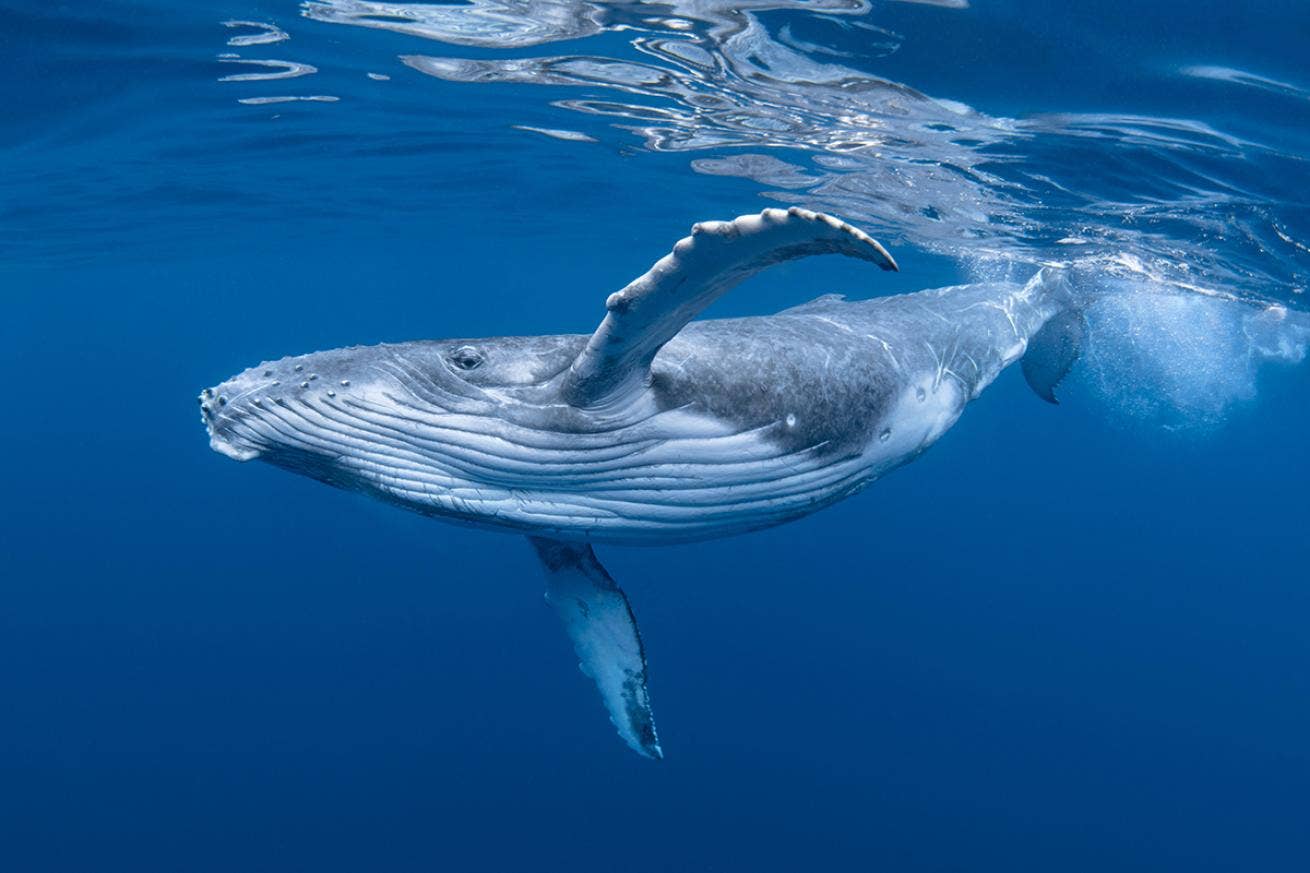Breakthrough amino acid compound successfully treats nonalcoholic fatty liver disease
Nonalcoholic steatohepatitis, the severe form of NAFLD, can cause irreversible liver damage and affects 6.5% of the global population.

[Apr. 11, 2023: JJ Shavit, The Brighter Side of News]
Nonalcoholic steatohepatitis, the severe form of NAFLD, can cause irreversible liver damage and affects 6.5% of the global population.(CREDIT: Creative Commons)
Michigan medicine scientists have developed a promising new treatment for nonalcoholic fatty liver disease (NAFLD).
Nonalcoholic fatty liver disease is a condition that affects up to 32% of people worldwide. NAFLD is characterized by the accumulation of fat in the liver, which can lead to inflammation and scarring. Nonalcoholic steatohepatitis (NASH), the severe form of NAFLD, can cause irreversible liver damage and is estimated to affect 6.5% of the global population. Until recently, there was no effective treatment for NASH, but a team of researchers at Michigan Medicine has developed a promising new compound that may change that.
The researchers developed a glycine-based tripeptide called DT-109, which they tested in both mice and non-human primates. In both cases, the drug was effective in reversing fat buildup and preventing scarring in the liver. The study was completed in partnership with an international team, including the Laboratory Animal Center at Xi’an Jiaotong University Health Science Center and the Institute of Cardiovascular Sciences at Peking University Health Science Center. The results were published in Cell Metabolism.
“For years, scientists have been trying to develop a medication that treats NASH, but many attempts have failed to show improvement or have raised safety concerns in clinical trials,” said Eugene Chen, M.D., Ph.D., senior author of the study and Frederick G. L. Huetwell Professor of Cardiovascular Medicine at University of Michigan Medical School. “NASH is rising at a staggering rate, and successful treatment of non-human primates with our drug candidate, DT-109, brings us closer than ever to treating the millions of people suffering from this condition.”
Related Stories:
The development of DT-109 was based on the researchers' discovery that impaired glycine metabolism is a cause of NAFLD and NASH. While hundreds of compounds have successfully treated NASH in mice, Chen says mouse NASH models are limited because not all aspects of the human disease are accurately mimicked and, therefore, are not easily translatable to the clinic. The research team’s non-human primate model for NASH, confirmed using multiomics profiling studies, is among the first to accomplish the feat.
In both non-human primates and mice, investigators found that treatment with DT-109 reverses fat buildup and prevents fibrosis progression by stimulating fatty acid degradation and antioxidant formation. The drug also inhibited the production of lithocholic acid, a toxic secondary bile acid closely linked to NAFLD.
“With this significant breakthrough in preclinical models, we can now consider evaluating DT-109 as a potential drug candidate for the treatment of NASH in future clinical trials,” said Jifeng Zhang, Ph.D., co-corresponding author and research associate professor of cardiovascular medicine at Michigan Medicine. “With millions of people suffering from NASH, the need for an effective treatment is more pressing than ever.”
NAFLD and NASH: A Growing Problem
NAFLD is a growing problem around the world, with rates increasing in parallel with the obesity epidemic. The condition is closely linked to metabolic syndrome, which includes obesity, high blood pressure, and insulin resistance. NAFLD can progress to NASH, which is a more severe form of the disease that is associated with inflammation and scarring of the liver.
NASH-related cirrhosis is now one of the most common reasons for liver transplantation, and there are currently no approved treatments for the condition. Lifestyle changes, such as diet and exercise, are recommended for people with NAFLD and NASH, but these changes are often difficult to sustain, and they do not always reverse the damage that has already been done to the liver.
NAFLD and NASH are also closely linked to other health problems, including type 2 diabetes, obesity, and metabolic syndrome. As the prevalence of these conditions increases worldwide, so does the incidence of NAFLD and NASH.
Currently, there are no approved medications for the treatment of NASH. This is partly due to the complex nature of the disease and the fact that it often occurs in people who already have multiple health conditions. In addition, the lack of suitable animal models for NASH has made it difficult to develop and test potential treatments.
The success of DT-109 in non-human primate models is therefore a significant breakthrough for researchers and clinicians working to develop effective treatments for NASH. The compound has shown promising results in reversing fat buildup and preventing scarring in the liver, which are two key features of NASH.
The research team conducted a series of experiments to test the efficacy of DT-109 in non-human primate models of NASH. The animals were treated with the compound for several weeks, and their livers were analyzed for signs of fat buildup, inflammation, and scarring.
A nonhuman primate NASH model is established to mimic human disease. (CREDIT: Cell Metabolism)
The results of the study showed that DT-109 was effective in reversing the damage caused by NASH in both mice and non-human primates. The compound reduced the buildup of fat in the liver and prevented the formation of scar tissue, which can lead to permanent liver damage.
The researchers also found that DT-109 works by stimulating fatty acid degradation and antioxidant formation in the liver. These processes help to break down the excess fat that accumulates in the liver and prevent the development of scar tissue.
DT-109 ameliorates nonalcoholic steatohepatitis in mice in a dose-dependent manner. (CREDIT: Cell Metabolism)
In addition, DT-109 was found to inhibit the production of lithocholic acid, a toxic secondary bile acid that is closely linked to the development of NASH. By blocking the production of this compound, DT-109 may help to prevent the progression of the disease and reduce the risk of complications.
The success of DT-109 in non-human primate models of NASH is an important step towards developing an effective treatment for this condition. However, further research is needed to determine the safety and efficacy of the compound in humans.
The researchers plan to conduct clinical trials of DT-109 in the near future to test its effectiveness in humans with NASH. If the trials are successful, DT-109 could become the first approved medication for the treatment of this condition.
The development of DT-109 is an example of the growing importance of precision medicine in healthcare. Precision medicine involves tailoring treatments to the specific needs of individual patients based on their genetic makeup, lifestyle, and other factors.
DT-109 reverses diet-induced steatosis and prevents inflammation and fibrosis progression in the livers from nonhuman primates with established NASH. (CREDIT: Cell Metabolism)
By developing a compound that targets the specific metabolic pathways involved in the development of NASH, the researchers have taken a step towards precision medicine for this condition. This approach could lead to more effective treatments that are tailored to the individual needs of patients with NASH.
The successful development of DT-109 for the treatment of NASH is a significant breakthrough for researchers and clinicians working to address this growing health problem. NASH is a complex disease that has proven difficult to treat, but the promising results of this study offer hope for millions of people around the world who suffer from this condition.
As further research is conducted, it is possible that DT-109 could become the first approved medication for the treatment of NASH, providing a much-needed option for patients who currently have few treatment options available to them.
For more science and technology stories check out our New Discoveries section at The Brighter Side of News.
Note: Materials provided above by The Brighter Side of News. Content may be edited for style and length.
Like these kind of feel good stories? Get the Brighter Side of News' newsletter.



